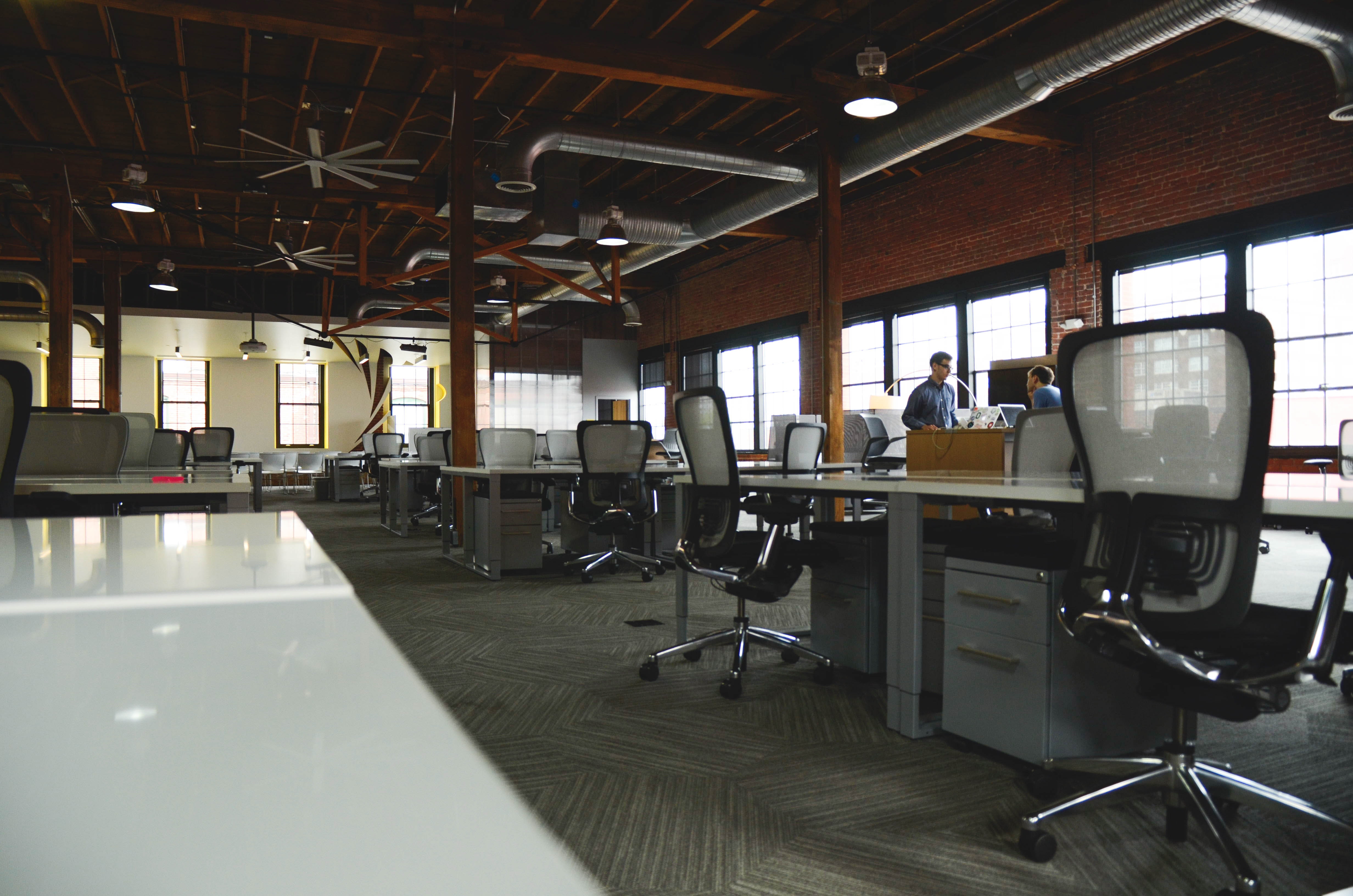74% of UK employees state they aren’t happy with their current offices, which is, perhaps, telling, considering 45% of all UK working days are lost due to ill health caused by stress. Considering UK employees have the longest working week in the EU, averaging at 42.3 hours, it’s important that the environments they work in are safe, welcoming and collaborative, promoting health and happiness.
Here, NG Chartered Surveyors discusses the ways in which you can optimise your office environment to make it both relaxing and creative – two crucial factors required for employees to carry out their jobs effectively.
Is open plan better?
Cubicles were replaced long ago in favour of open plan designs, introduced to encourage communication and collaboration amongst workers. However, this hasn’t always been successful – major corporations found a 70% reduction in face-to-face interactions, with employees switching to instant messaging and emails instead.
Why? If you work in an open plan office, look around. How many people have their headphones in? Taken as a sign of ‘do not disturb’, employees can be deterred from walking over to their colleagues. Arguably, cubicles wouldn’t cause this issue, as colleagues can’t physically see each other from their desks.
The stats for open plan offices might surprise you. In 2014, a survey of 10,000 workers uncovered that 85% of respondents couldn’t concentrate in an open plan workspace, with the average worker losing 86 minutes a day due to distraction – leading to higher stress levels.
Whilst some employees find open plan offices too noisy, others find it too quiet. An article by Harvard Professors found employees were likely to have shorter, more superficial conversations in open plan areas, because they were self-conscious of being listened into. Werqwise recommend a combination of the two approaches, enabling opportunities for collaboration and privacy.
Remote working
Over 4 million people work solely from home in the UK, and it’s predicted that by 2020, half of the workforce will be working remotely.
The benefits for employees are obvious: no commuting times, plenty of time to exercise (great for the mind!), and the ability to dress casually. The benefit for employers? Remote workers enjoy increased productivity levels of 16% with office distractions removed.
Whilst entire remote working isn’t always possible, having the opportunity to work from home occasionally can be a huge draw for people looking for flexible employment opportunities; and is a great way to improve morale.
Office dogs
Eight per cent of UK offices allow workers to bring their dogs in, according to Reed. One of these organisations is Nestlé, which has 12 designated dog-friendly meeting rooms, and a Central Bark garden for pooches to get some fresh air.
The results of this have been positive, with Nestlé employees noting they’ve seen an increase in happiness at work, directly due to the presence of dogs. They encouraged communication between the workforce, and a more social atmosphere; not to mention a healthier lifestyle, with employees walking the dogs and enjoying fresh air.
However, there can be downsides – especially for people who are allergic to dogs. It also replaces extra responsibility on the owners; and for clingy dogs, being separated from their owners if they’re in meetings can be distressing.
Plants and botanicals
Biophilia refers to the desire that humans naturally have, to be connected with nature. Psychologists have claimed that offices devoid of pictures, souvenirs and other distractions are “the most toxic space” a human being can be put into.
Research conducted at Exeter University found that employees were 15% more productive when plants were introduced into the office. But that’s not the only benefit they bring. The University of Technology, Sydney found that offices adorned with plants saw a decrease of tension and anxiety by 37%, depression by 58%, fatigue by 38%, and hostility by 44% amongst workers.
58% of employees work in a space that is plant-free, despite the benefits they bring – something perhaps for employers to consider.
Office acoustics and colours
For office wellbeing, the right level of ambient noise is required so the office is never too loud or silent. Playing music on a low volume is ideal for banishing silence and stopping employees from feeling too self-conscious to speak. By adding in carpeted floors and freestanding screens at the edges of desks, noise travel is reduced, lessening disruption in the office.
For optimum office wellbeing, it’s imperative you create designated quiet zones that your employees can retreat to; whether it’s for calls, meetings, or just a place to relax for some peace and quiet.
Perhaps surprisingly, colour can affect your employees’ productivity and mood levels too. White, beige and grey can reportedly cause feelings of sadness and depression, and red can increase heart rates and panic.
Instead, opt for greens and blues: their association with nature helps to improve efficiency and focus. Alternatively, yellow is a good colour for the office as it’s optimistic, energetic and fresh – ideal for creativity. Werqwise suggest avoiding bright colours unless they form your brand’s colour scheme, otherwise it can become too jarring.
To conclude, employee wellbeing should be treated as highly important in all offices. These tweaks to your office will help to ensure your staff are working in a space that promotes productivity, satisfaction and happiness; not anxiety, stress and depression.
Your staff are ultimately your most important assets, and if they are dissatisfied, they’ll leave. With recruitment costs of one skilled employee estimated at £100,000, you can’t really afford not to tweak your office space into a collaborative, relaxing environment.

